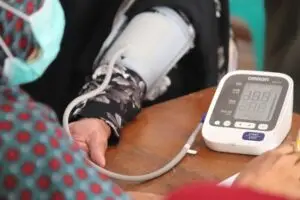Return to CVD Roadmaps Home
Due to the aging population, increase in cardiovascular risk factors and improved survival of cardiovascular conditions, the prevalence of heart failure is increasing globally to an estimated number of 26 million, with additional millions of undiagnosed cases. Despite the fact that many cardiovascular diseases end in heart failure, the condition too often fails to attract the awareness and emphasis it deserves.
About heart failure
Heart failure is a complex clinical syndrome when the heart is unable to pump sufficiently to maintain blood flow to meet the body’s needs. It can be either acute and come on suddenly, or a progressive, long-term condition. The symptoms including worsening shortness of breath, coughing or wheezing, tiredness and fatigue, fluid retention with swelling of the legs and/or abdomen, and being less able to do physically demanding tasks or exercise.
There are many possible causes, including infectious diseases, such as Chagas and rheumatic heart disease; cardiac conditions, such as heart muscle disease, coronary heart disease including previous heart attack, valve disease, congenital heart disease, pericardial disease and rhythm disorders; chronic lung disease; poor lifestyle choices, such as a high salt diet, smoking tobacco, alcohol or drug misuse; or failure to adhere to preventative medications.
The magnitude of the problem
Heart failure is the world’s leading cause of hospitalization. It results in a burden that is felt at every level of healthcare:
- For systems and healthcare workers assisting with greater numbers of very ill patients
- For health economies with increasing costs, particularly in a disease area where rehospitalizations are so high: 50% are readmitted within six months of discharge
- For patients who are diagnosed with a progressive disease without a cure, and their carers
The prognosis for those diagnosed with heart failure is poor:
- 17-45% of patient deaths occur within one year of hospital admission
- 45-60% of deaths occur within five years of admission
But heart failure also takes its toll on people’s daily lives and their families, often resulting in a reduced ability to lead the same lifestyles as before.
The World Heart Federation Roadmap for Heart Failure was officially launched at ESC Congress 2019 together with the World Congress of Cardiology on Monday 2 September 2019.
Patient story
“In my 20s and 30s I never thought about my heart health. I stopped exercising when I left school, my diet was pretty bad and I was a smoker. By my late 30s I had gained quite a bit of weight, I couldn’t climb the stairs without getting out of breath and my legs were swollen. I didn’t realise this meant I was retaining fluid which is a classic symptom of heart failure.
A few years later, my breathlessness was getting worse and my legs were an unusually pale colour. But I still didn’t go to my doctor… I think I was scared of what he’d say. By the next year I was coughing a lot and I felt like I couldn’t breathe when I was lying in bed. I finally went to see the doctor who diagnosed me with high blood pressure, type 2 diabetes and kidney disease. Shortly after this I was diagnosed with progressive heart failure and my heart was working at only 30% of it function. That dropped to 20% within a couple of months.
In hospital, a cardiologist told me that I was in serious trouble, so as well as taking my medications I stopped smoking and drinking, and started eating healthily. Within a few months I was able to go for short walks and that progressed quite quickly to longer exercise sessions.
My family had a history of heart disease but I was determined not to let this condition get the better of me. Now heart health has become a way of life for me.”














